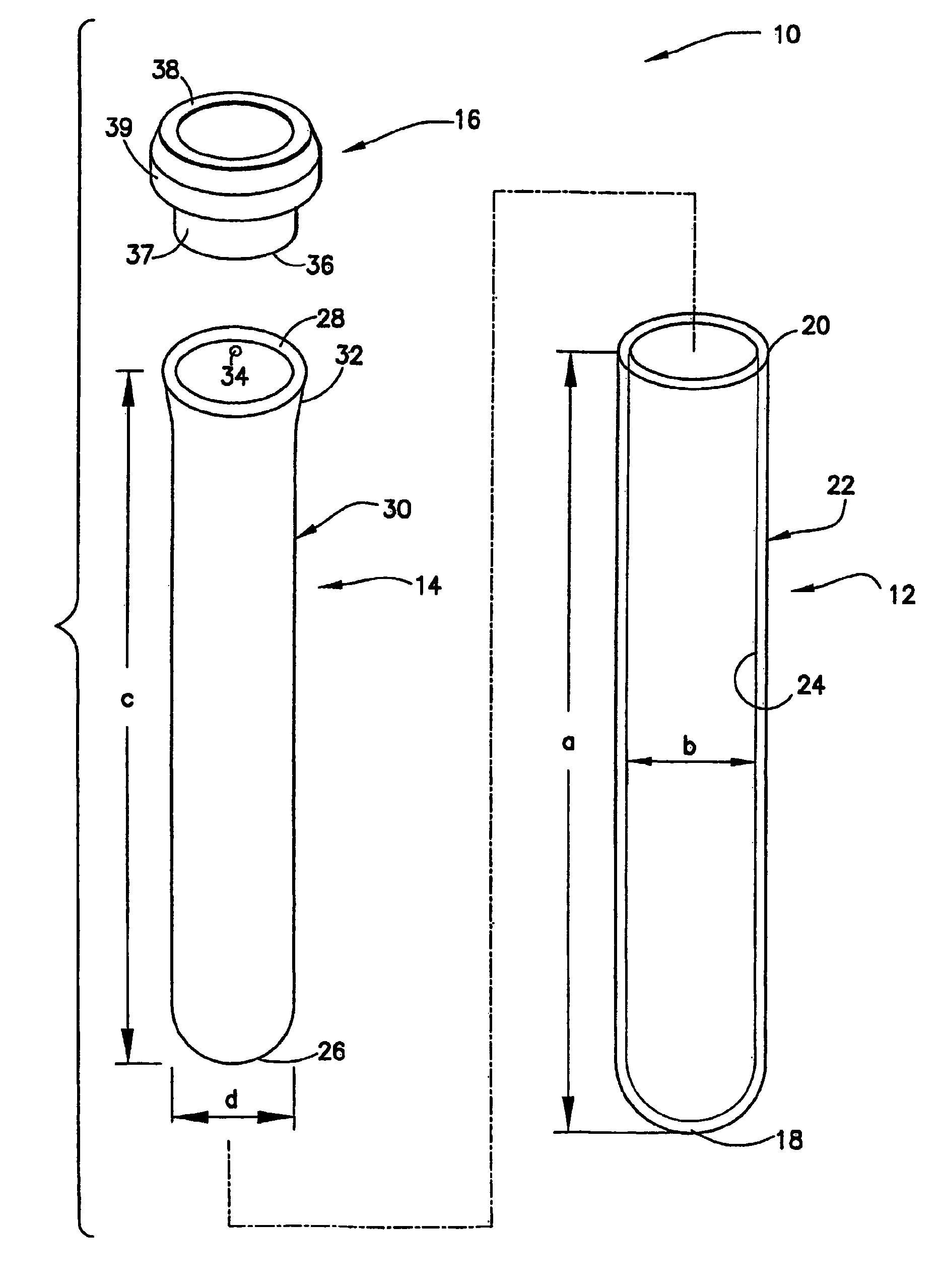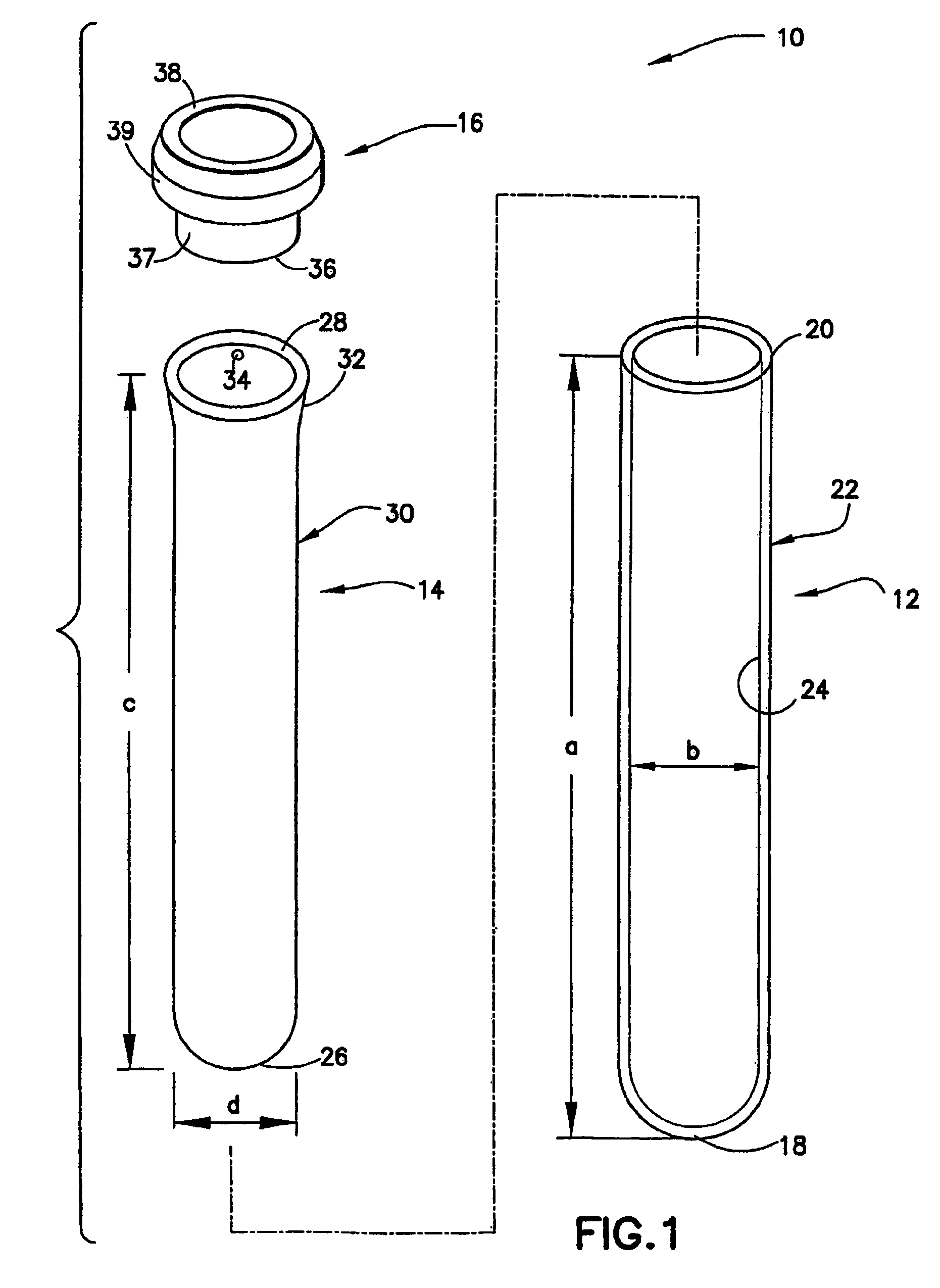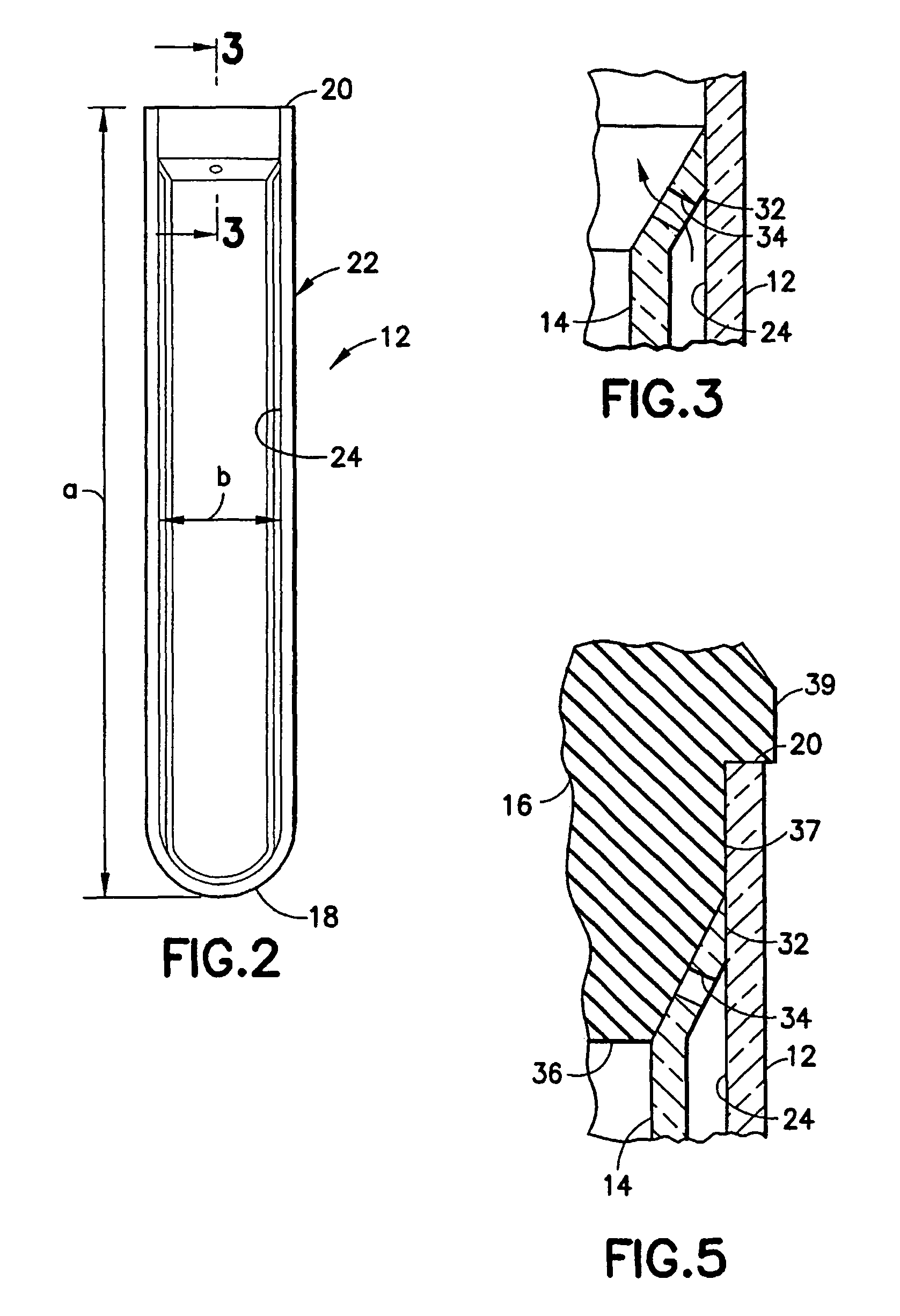Collection assembly
a technology for collecting containers and containers, which is applied in the field of collecting container assembly, can solve the problems of affecting the intended use of the container, affecting the shelf life of plastic tubes containing liquid additives, and affecting the shelf life of plastic tubes
- Summary
- Abstract
- Description
- Claims
- Application Information
AI Technical Summary
Benefits of technology
Problems solved by technology
Method used
Image
Examples
Embodiment Construction
[0041]An assembly in accordance with a first embodiment of the subject invention is identified generally by the numeral 10 in FIGS. 1-5. Assembly includes an outer tube 12, an inner tube 14 and a closure 16.
[0042]Outer tube 12 is unitarily formed from PET and includes a spherically generated closed bottom wall 18, an open top 20 and a cylindrical wall 22 substantially extending therebetween. Outer tube 12 defines a length “a” from the interior of the bottom wall 18 to the open top 20. Side wall 22 of outer tube 12 includes a cylindrically generated inner surface 24 with an inside diameter “b”. However, side wall 22 may taper slightly from open top 20 to closed bottom wall 18 to facilitate molding.
[0043]Inner tube 14 is formed unitarily from polypropylene and includes a spherically generated closed bottom wall 26, an open top 28 and a substantially cylindrical side wall 30 extending therebetween. Inner tube 14 defines an external length “c” that is less than internal length “a” of ou...
PUM
 Login to View More
Login to View More Abstract
Description
Claims
Application Information
 Login to View More
Login to View More - R&D
- Intellectual Property
- Life Sciences
- Materials
- Tech Scout
- Unparalleled Data Quality
- Higher Quality Content
- 60% Fewer Hallucinations
Browse by: Latest US Patents, China's latest patents, Technical Efficacy Thesaurus, Application Domain, Technology Topic, Popular Technical Reports.
© 2025 PatSnap. All rights reserved.Legal|Privacy policy|Modern Slavery Act Transparency Statement|Sitemap|About US| Contact US: help@patsnap.com



